Baby goats are about the cutest little things you will ever have romping about in the barnyard. They are bundles of energy and want to investigate every single new sight, sound, and smell. The days and weeks after the new kids arrive are full of fun, but getting them here isn’t always easy.
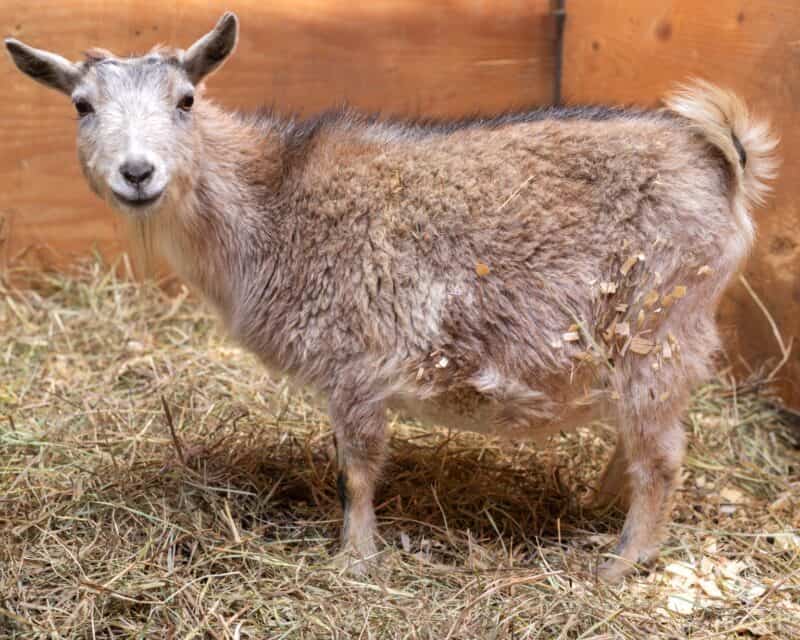
Goat does often have problems delivering their babies, especially the first time they give birth. Typically, a first time goat pregnancy involves just a single baby goat. The new mommy often is not sure exactly what to do once the new goat arrives, leading a lot of folks to resort to bottle feeding.
If you’re creating a birthing stall for the doe and her kids, the new momma will almost always figure out how to feed and care for the babies herself. Removing a baby goat to bottle feed eliminates the ability for the doe to teach her offspring how to BE goats.
Some goat keepers maintain you must bottle feed the babies in order to make them easy to handle and to ensure they bond with the humans who will be caring for them while they pull weed eating and milk producing duty on the homestead or survival retreat. I beg to differ.
In my experience, it is always best to replicate the natural order of things as closely as possible, that is why all of our animals are free range.
Simply handling the baby goats both in front of and away from the mother, has been enough to keep the livestock adequately tame, without removing the momma goat from the equation and creating a lot for work for yourself by bottle feeding.
Goat Litters
Similar to how kangaroos have jacks, horses have foals, and dogs have puppies, the actual term of a baby goat is known as “kid”. Does most commonly give birth to twins (two kids at once.) Though twins are common, your doe having triplets not rare. The doe can have anywhere between one to up to six kids per litter.
The average goat gestation lasts 150 days, so a female goat could realistically have two deliveries each year. If you’re preparing for breeding goats, it’s smart to prepare yourself for two kids per pregnancy but to keep in mind that there could be more or there could be less.
If you plan on raising a goat for dairy production, you will need to breed her regularly – otherwise she will be dry, or non-lactating. If you plan on milking your goats, remember that you will need to bottle-feed the goats after they have received colostrum from their mothers within the first 24 hours.
Does are seasonally polyestrous, with a cycle that lasts for 21 days. How often and how successfully a doe kids will be determined by a variety of factors such as the length of the breeding season, ovulation and fertilization rates, and the growth and viability of the offspring.
Goat Puberty and Heat Seasons
Typically, does reach puberty between four to twelve months of age. However, does are usually bred at about eighteen to twenty-four months, for their first time.
Surprisingly, bucklings (a sexually immature young male goat) can be fertile at the young age of seven weeks. Whether or not he can get the job done is a completely different story.
Does going into heat occurs every 21 days which will last approximately one to three days.
On average, it lasts for about 36 hours but this can vary depending on the age, breed, and personality of a doe – as well as on the presence of a male. Interestingly, if you live in a tropical area, there are sometimes not pronounced differences in the day length so does might be encouraged to breed simply by the availability of food.
These breeds below can breed year round:
- Nigerians (dairy goats)
- Boers (meat goats)
- Spanish (meat goats)
- Pygmies (multi-purpose goats)
- Myotonic a.k.a Fainting (multi-purpose goats)
- Nubians (largest of dairy goats breeds and are also often raised for their meat)
Unlike the breeds above, other dairy breeds are seasonal breeders. This means they will go into heat every 21 days like the other breeds but will only occur from August to January.
A doe being in heat is the period when the doe will allow the buck to breed her. The reproductive usually lasts 12 to 36 hours. As strange as it sounds, if a buck is in rut (occurs when a surge of hormones overcome them and ready to breed before a doe is ready) can sometimes cause the doe to come in heat earlier.
here are numerous signs that will help you determine if your doe is in heat.
Signs That Your Goat is in Heat
- Urinates more frequently
- Her tail gets sticky (red, swollen, wet with discharge)
- Vocalizes more than usual
- Wags her tail (known as “flagging”)
- Your does act bucky (mount other does or let other does mount her)
- Personality changes (may act aggressive)
- Milk volume changes
- Buck acts bewildered, or “goofy”
- Loss of appetite
If a goat is successfully bred, the gestation period lasts for five months, approximately 150 days.
Now, bucks on the other hand, are entirely different creatures. For starters, they stink. Bucks in rut have a pronounced odor and it doesn’t help that they urinate all over themselves sand will be covered in muck.
If you are keeping both bucks and does, you will need to keep them in different pastures. If you have seasonal goats, you can probably get away with this. However, year-round breeders need separate pastures and there can be no shared fences – bucks can and will breed through a fence. The stench from a buck in rut can cause your milk to become off-flavor, too.
You will want a super strong fence to keep your buck in. If he can sense that the does are in heat, a thin strand of electrical won’t help.
Often, you need both a physical and psychological barrier to help keep your buck contained. When dealing with your buck in rut, never turn your back on him – he could ram you.
Bucks will engage in a variety of other behaviors, too, when they are in rut. You might notice him waiving his tongue, spitting, or even stomping. You will want to increase his feed allotment during this time to help him keep his energy up, too.
How to Tell if Your Doe is Pregnant
You may begin to wonder if your goat has randomly put on a few extra pounds or if she was successfully bred and in the process of kidding – the term used to describe a goat in labor.
Similar to humans being able to pee on a pregnancy test stick, there are “tests” for you to know if your doe is pregnant. You can send in a blood test and milk test to a lab or get an ultrasound done.
The only downfall with blood tests is that it is a bit on the pricey side. If you are wanting to send in a blood test, ‘Biotracking’ is a very popular lab with this option.
The milk test will not be accurate if she has never freshened (hasn’t had her first kidding or produced milk) before. However, if you are currently milking a doe that has been bred, you ought to send a sample of her milk to the ‘Dairy One Lab.’ If you decide to go with an ultrasound, you will also be able to find out how many kids your doe will be having so you know ahead of time how many to expect.
The tests mentioned above may be out of your budget but fortunately, there are other ways to give you an idea of whether or not your doe is pregnant.
- Pooch Test – Lift up your doe’s tail to check her vulva and anus. Check this area again after approximately two months and see if there is any change. If her vulva appears longer and the anus drops away from the tail area, she is most likely pregnant.
- Size – Not every doe will swell up during pregnancy. My goat did not look pregnant until three months gestation. However, a lot of people can confirm pregnancy by the size of their goat.
- Belly tightens – Her belly will tighten around two weeks after being successfully bred. Firmly press your fingers against her belly just in front of her udders and see if it feels tight and tense. If she is not pregnant, her belly will feel soft.
- Not going into heat – If your doe has settled (gets pregnant) she will not be in heat again until the next time you breed her. She will also show little to no interest towards any bucks.
- Increased appetite and decreased milk production – You need to stop milking her two months before kidding if she does not stop production on her own because her body needs to rest. You will also see her interested in eating more frequently.
- Swelling of her barrels – Every doe is different and may not swell up as fast as you imagined but if you measure her girth every couple months, you will detect an increase in size, if she is pregnant.
- Changes in her personality – Hormones will take over approximately after two weeks. If she is normally friendly, she may become distant towards you. On the other hand, if she is usually shy, she may become your best friend. This is a temporary change and she should be back to herself shortly after kidding.
- Her udders begin to swell – After about six weeks after her first time settling, her udders will begin to develop and should be rounded twelve weeks into gestation. However, if this is not her first time settling, she may not swell up until days of her kidding.
- Shape changes – It is very common for her right side to stick out further than the left as her kid(s) develop. If she is carrying twins or more, she will bulge out just as much on the left side as the right. Does that have kidded before normally develop a saggy belly instead of swelling at the sides.
- Kid(s) movement – You may begin to detect movement three to four months after your doe has settled. In order to feel this, press your hands on her right side, right ahead of her udder, and you should be able to feel her kid(s) moving around.
Bloat vs Pregnancy
It can be extremely difficult to tell whether a doe is pregnant, especially in the early days when it’s easily mistaken for bloat. If your goat seems uncomfortable and wide, particularly on the left side, she might just be bloated.
This is especially true if you recently changed her food or she got into food when she wasn’t supposed to. If there are any signs of labored breathing, that is not normal early on in a pregnancy – call a vet.
It can be tough to tell whether your doe is pregnant, although a combination of any of the signs above are usually good enough to get the job done. However, be aware that pseudo pregnancy is quite common in goats – although it’s unclear what, exactly, causes it.
This happens when aseptic fluid accumulates in the uterus and it’s often connected to high levels of progesterone in the blood. It’s common in older goats as well as those bred out of season, but usually, ultrasound technology and other more sophisticated measures of determining pregnancy can rule this out.
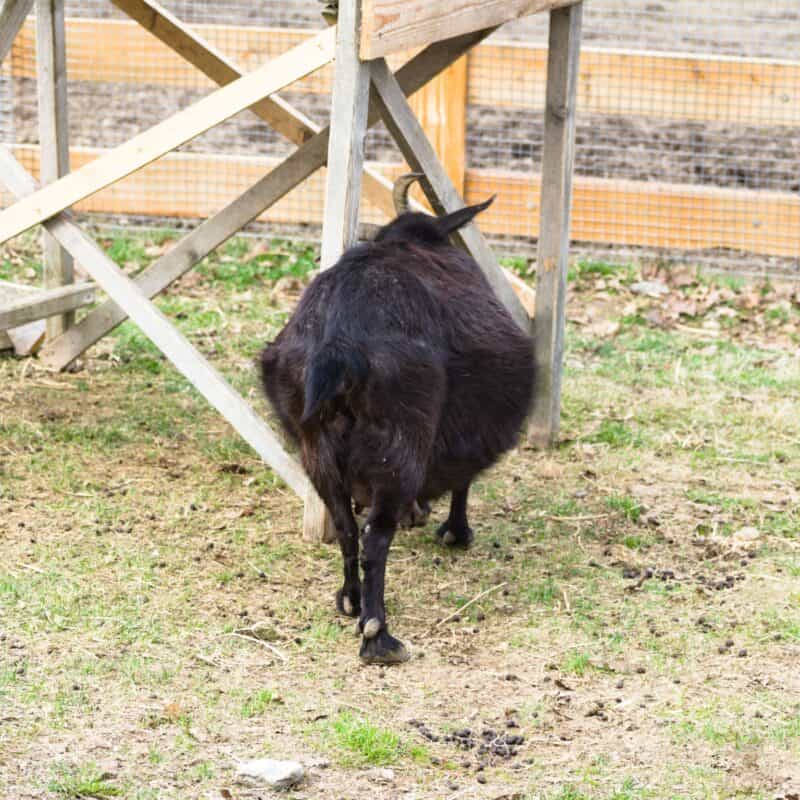
Feeding a Pregnant Doe
It is extremely important that you make sure your doe is getting the proper nutrition that she needs to remain healthy during her pregnancy. As important as it is to make sure your pregnant doe is getting the right amount of nutrition, it is also very important to make sure to not over-feed her.
If you over-feed your doe, it can lead to ketosis and hypocalcemia. Over-feeding grain can also cause the kids to grow so large that your doe will have difficulties during kidding.
With good quality hay and pasture, your doe will meet their nutritional requirements during the first three months. If your doe is on the thin side, you may want to add grain to their diet. Does generally do not need grain in early pregnancy unless they are lactating.
Make sure to also give your goat plenty of water. Throughout their pregnancy, does can drink up to four gallons a day. Due to the unborn kid(s) growing rapidly during the last two months, their nutritional requirements will greatly increase. You will want to gradually start grain to about a handful per day until your doe makes it to a half pound of grain a day.
Make sure you also give your doe hay during this time. In order to be certain your goat is getting the proper balance of phosphorus and calcium needed, gradually replace their hay with alfafa. If you suspect that your doe is carrying multiples, she will need even more nutrients and calories.
You should also stimulate the doe’s appetite with vitamins by giving her Molasses and Karo syrup. You will need to mix two parts corn syrup to one part molasses and pour it over grain, onto a piece of break, or pour it into a small water pail. The dosage should be 20 – 30 ml per feeding and can be done up to twice a day during the final weeks of pregnancy and while nursing.
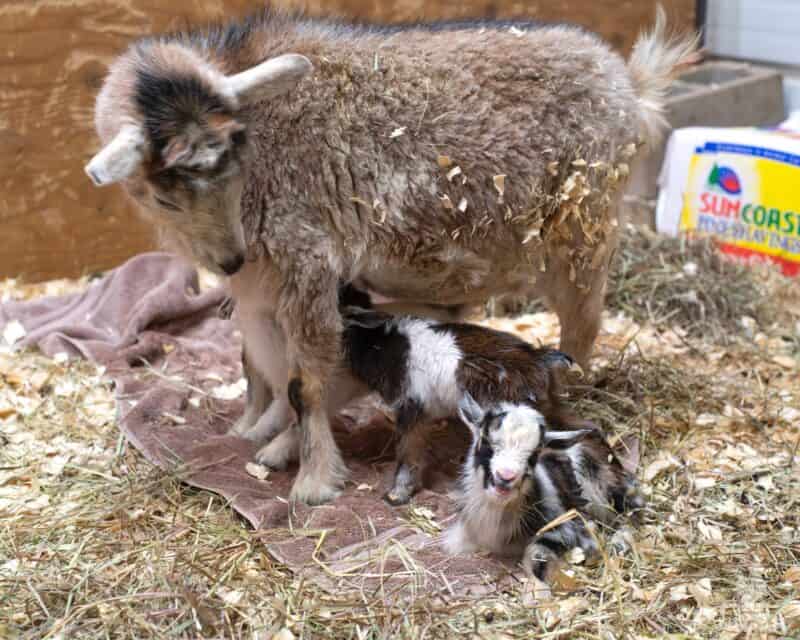
Goat Kidding Tips
While your doe is approaching labor, it is your responsibility to make sure she is in the best possible heath and that her kidding will be as smooth as you had hoped for. There are many different things you should do and be educated about before kidding and afterwards to properly care for your pregnant goat.
You do not ever give any type of drugs to your goats during the first twenty-five to thirty days of their pregnancy as this can cause birth defects. Also, do not worm your doe until later on in the pregnancy.
If you wait to deworm about two weeks before kidding should occur, her unborn kid(s) will also be protected from the unwelcoming parasites.
Approximately two months before kidding, you should trim their hooves before their belly becomes too bulky. In order to keep things less messy, you should also shave her “privates,” udder, tail, and belly in front of her udder. Doing so will also be easier for you to distinguish any body changes regarding to the beginning of kidding.
The CDT shot is often recommended around four weeks prior to her due date to protect her kid(s) from tetanus. A dose of selenium is also recommended.
CDT protects against Clostridium perfrignens type C+D and also protects against tetanus. Everybody who raises goats should use this and it’s the only universally recommended shots for goats.
It will carry on through the mother’s milk to her babies. You might also consider shots for ovine ecthyma, pasteurella, and other diseases, but these are optional.
Also, around four weeks prior to kidding, you should have a birthing stall set up and a birthing kit ready to go. You should also make a bed out of straw and be sure to clean this out as often as once a week.
Keep in mind, goats are not fond of being alone so you might want to keep one of her herd members nearby and visible outside of the kidding stall.
You need to make sure your birthing stalls are nice and warm. Goats are pretty good at tolerating the cold, but if the weather habitually drops beneath 30 degrees Fahrenheit, you will want to make sure you have a shelter for them to go into.
This is particularly true when you have does that will be kidding and delivering soaking wet babies in the cold.
Birthing Kit Essentials
- Flashlight
- Gloves
- Empty feed bags (easier clean up)
- Vaseline (in case you have to turn a kid)
- Old wash cloths or towels
- Scissors to cut the cords
- Iodine to treat the cords
- Heat lamp (kids may get chilled)
- Bulb syringe or nasal aspirator
- Bottle and nipple – just in case the doe refuses to nurse or dies during labor
- Extra straw to keep your goat comfortable – she will need a place to deliver on and you will want extra straw for cleanup after the fact
- Udder balm
- Keto-drench for after freshening
- Colostrum supplement
Other essentials? Make sure you have the phone number of a local vet on hand (ideally one who is familiar with goats) in case anything goes wrong.
Signs of Labor
Goats, just like women, experience symptoms of labor approaching, there are prominent signs to inform us on the kidding of your doe being imminent.
Every doe is different and your doe may or may not show all or none of these signs. First time does are often frightened by the pain and what is going on inside their bodies, and will often try to run away from their location to get away from the discomfort.
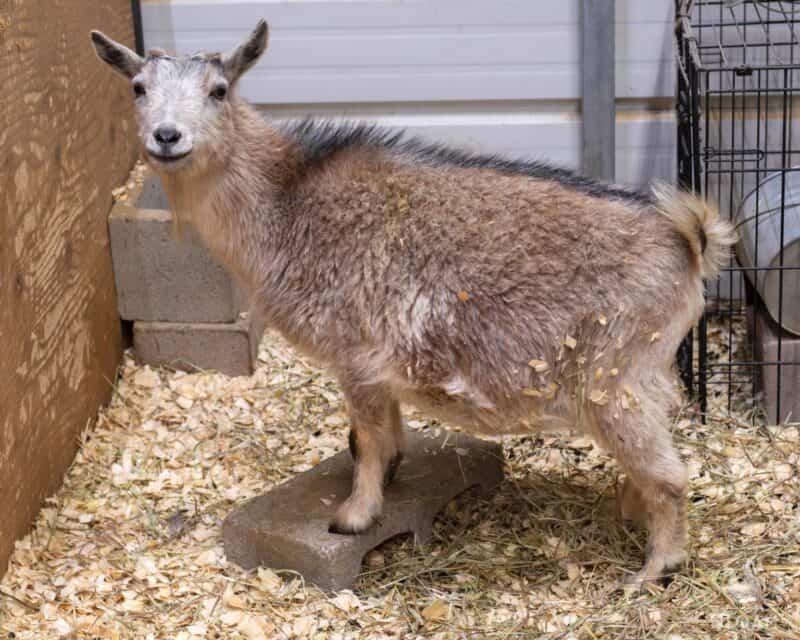
- Pawing at the ground (typically happens hours before kidding)
- Acts restless (cannot get comfortable)
- Pelvic ligaments begin to loosen (usually occurs within 24 hours)
- Whites of eyes are bloodshot
- Raised tail head (if you can put your fingers all the way around her spine, expect the kid(s) over the next 24 hours)
- Full and tight udder
- The doe discharges mucus
- Doe becomes more vocal
- Lots of stretching (if her tail is arching while stretching, these are contractions)
- Doe shows more than normal affectionate towards you
- Doe starts drifting away from the herd if not in a nursing stall
- Teats become full of milk
- Decrease in appetite
- Water bag bursts
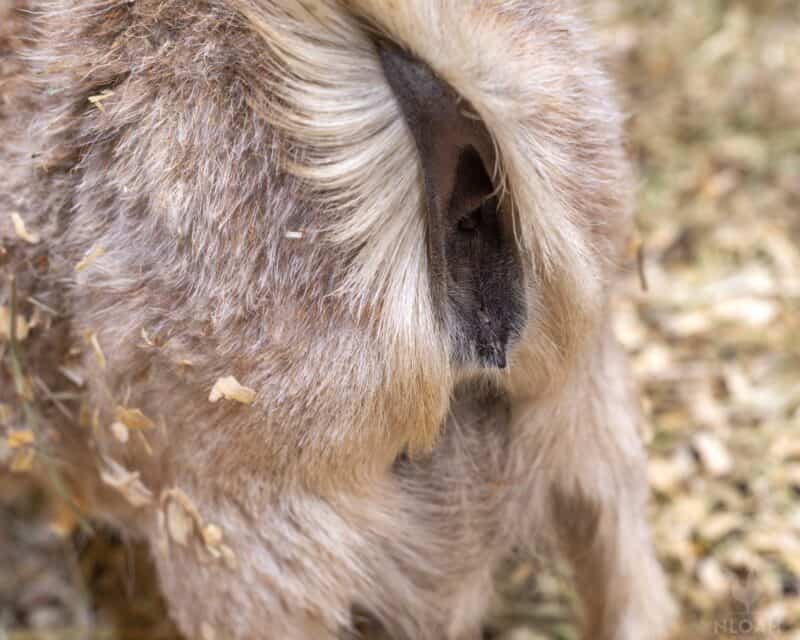
How Long Does Kidding Last?
As every doe is different, every kidding is different as well. As long as there are no complications, the average doe’s first time kidding lasts for approximately twelve hours.
If your doe has never experienced this before and is scared, she will more than likely continue to turn around and consistently check to see what is going on “behind” her.
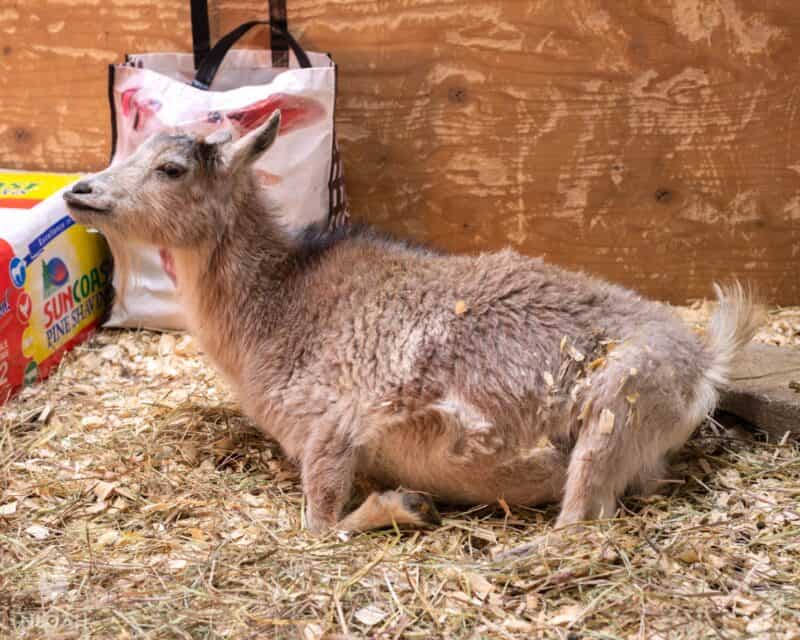
At this point, you want to just sit there and love on her for as long as she will let you to make her more comfortable. Her natural instincts will soon kick in if they have not already. Then again, if your goat wants to be left alone, her labor could stop or slow down if unwanted spectators are around.
Does will give birth either standing up or laying down. This depends on the doe, and both are normal. It’s great for you to be there to assist if needed, but don’t feel the need to get involved or even close. This might stress your doe out even more.
The second stage of kidding is when the her contractions will continue to get stronger and the kid(s) will start moving down the birth canal if the kid is correctly lined up. This stage will last for about five hours. Be prepared to hear a lot of bleating during this time.
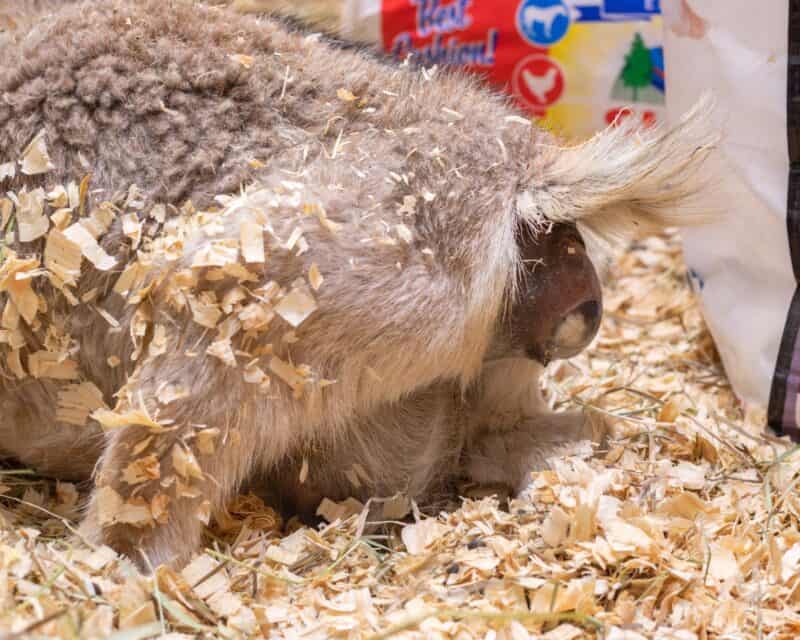
Shortly after your doe enters the second stage of kidding, she will begin to push. The first kid should be delivered approximately thirty minutes to an hour after she begins pushing. Her kid may be malpositioned (breached) or stuck if she pushes longer than the one hour period.
If you suspect your doe is carrying twins or multiples, the second baby will arrive approximately thirty minutes to an hour after the first born.
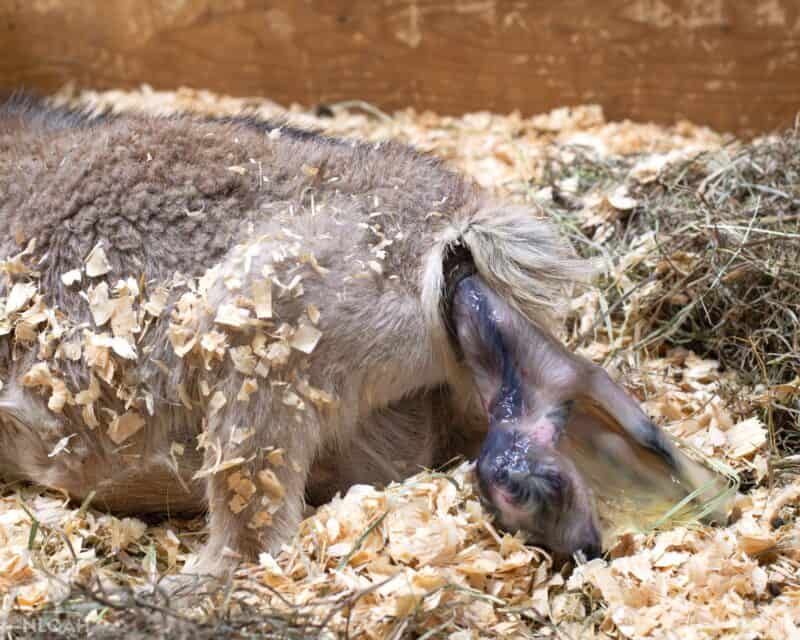
This process is the same with each additional kid being born. If your doe is appearing to be comfortable and caring for her kid, everything should be fine if the second kid comes a little later than the hour mark. Remember to always keep a cautious eye out just in case.
Keep in mind that some doe’s lie down while pushing her kid out while other doe’s stand up to push theirs out. Allow your doe to do whichever she prefers so she can be as comfortable as possible and just stay close to her in case if any birthing difficulties should occur.
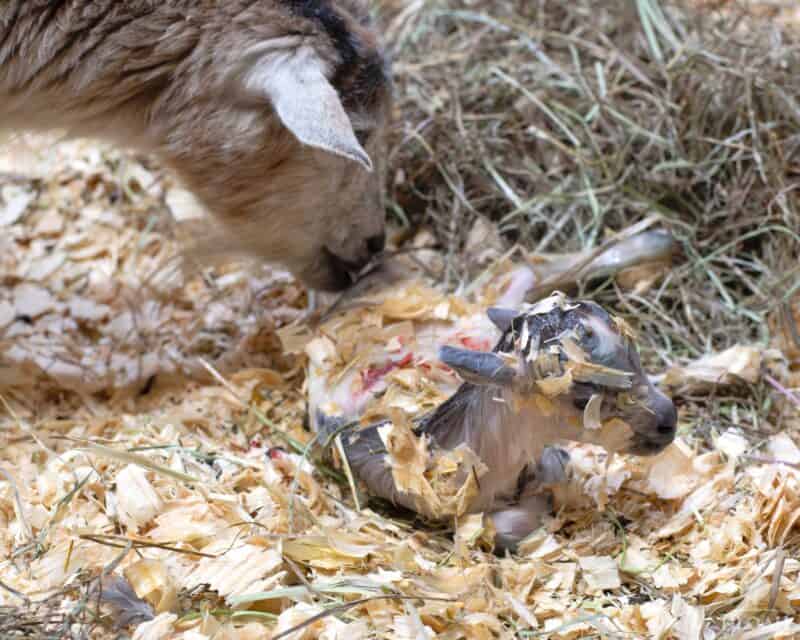
Assisting with the Kidding
Most goats can give birth without needing any help from a human. However, you should still stick around the birthing stall just in case she needs As with any birth, you need to always expect the unexpected because you never know what could happen. You want to be as educated as possible in case something would go wrong.
The kid should be positioned head first with his or her hooves outstretched in a normal birth presentation. If the back feet come out first, this is considered “breech.”
Breech births are fairly common in goats and do not always cause a problem as long as the kid does not swallow any amniotic fluid. To ensure the kid does not inhale any amniotic fluid, pull on the hind legs very gently so their head promptly comes out.
Make sure the kid is not in any of these positions or you will need a veterinarian or a very experienced goat owner to assist with the kidding:
- Head back – the head will be back to one side and hooves out
- Crown presentation – the top of the head will come out first
- Transverse – will be located across the uterus with a side near the cervix
- Front legs back – nose will be present but no hooves visible, legs are back
A veterinarian may have to perform a C-secton if any of the above positions occur that you can not fix yourself.
Your doe might become exhausted in between pushes and may take a break after getting the kid half way out. If this would occur, it is okay and recommended to pull the kid the rest of the way out by holding his rear legs out to help her.
If you do not help the kid out in this situation, the umbilical cord could break from the doe’s pelvis and cause the kid to suffocate.
Always remember to pull the kid in a downward position, towards your doe’s udders. In order to be sure there is no fluid in their lungs, you need to dangle the kid upside down and give a few gentle taps on each side.
Post Kidding Care
The first thing you need to do is make sure your doe is letting her kid nurse. It is crucial that the kid gets the doe’s colostrum for the first three days. This will result in yellow gooey poop, which is very healthy.
Colostrum is really important because it contains all the nutrients your kids need to get started. It will contain maternal antibodies as well as vitamin A, fat, minerals, and other sources of energy.
If your doe is not allowing her kid to nurse, even if you plan on bottle feeding, you may have to restrain your doe for about four to five hours a day while her kid can nurse.
Purchasing a milk stand may be helpful so you can put your doe on it and allow the kid to nurse this way. Otherwise, you will have to bottle raise her kid.
You need to make sure the young goats receive colostrum, ideally through the mother, or else through a colostrum supplement, to help them get the head start they need.
You also need to make sure that all of her placenta has come out. Placentas usually deliver after an hour of kidding but can take up to twelve hours.
Your doe may find interest in eating bits and pieces of her placenta, just be sure she does not choke on it. If no placenta has yet been delivered after twelve hours, you need to call the vet immediately.
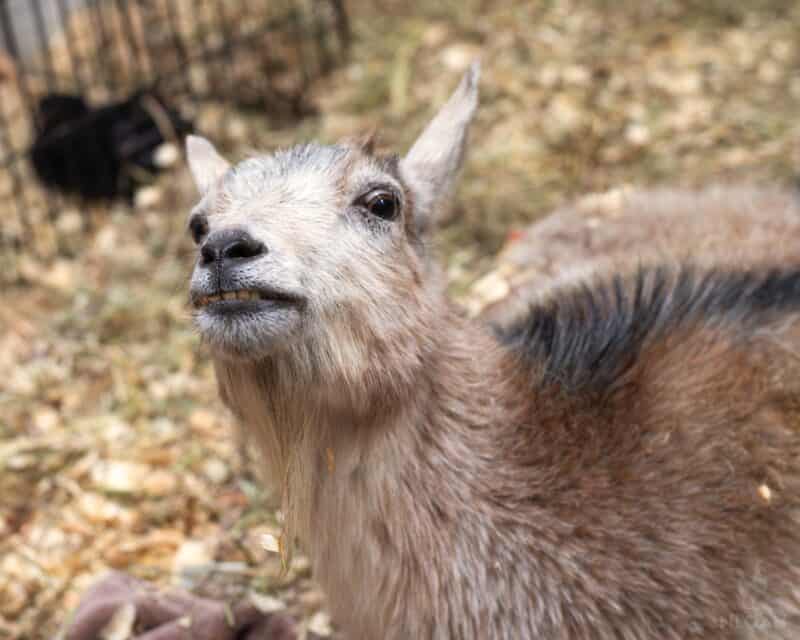
If your doe does deliver her placenta, you might want to give her some extra food to ensure she has enough energy to nurse.
To boost your doe’s energy, I recommend giving them molasses and some honey mixed in with a small amount of grain. Also be sure to give her plenty of water to rehydrate her after losing a tremendous amount of body fluids. Continue to give her grain and the best quality hay.
If bottle-feeding is necessary, start out with a few squirts in the kid’s mouth. You should bottle-feed around five times on a daily basis. Usually, however, bottle-feeding is not required.
Mama doe will take care of everything herself. You want to watch her carefully in the first few hours to make sure she is licking them until they are dry and acting concerned if they start to cry. Your doe should not neglect the kids, nor should she reject them if they try to nurse.
Kids will usually be able to stand within just a few minutes of being born, but they’ll be quite unsteady. A good doe is one that allows them to nurse and get the hang of things. Sometimes, though, you may need to teach her how to stand and nurse.
It’s not a bad idea to take your doe’s temperature about 24 hours after birth. A high temperature (anything over 103 degrees Fahrenheit is high for goats) can indicate an infection. As you’re checking your does, make sure your baby goats are peeing and pooping.
After a week has passed, you may provide the kid with grain as long as it contains 16% to 18% of crude protein for rumen develop to kick-start. You should also be making a plan to disbud and castrate your goats, if needed.
Once the kid is three weeks of age, you can then provide fine-stemmed hay or pasture mix. Kids will begin to wean about six to eight weeks of age whether they are mother-raised or bottle-raised.
Disclaimer
The advice given in this article is given “as is”. neither the author, www.newlifeonahomestead.com or the company behind it shall be held responsible for the misuse of the advice in this article. Always consult your veterinarian when dealing with goat pregnancy.

Tara lives on a 56 acres farm in the Appalachian Mountains, where she faces homesteading and farming challenges every single day, raising chickens, goats, horses, and tons of vegetables. She’s an expert in all sorts of homesteading skills such as hide tanning, doll making, tree tapping, and many more.

Just had two of my females give birth one to triplets the other twins they did it all by themselves overnight. We didn’t even realise I suspected the second one maybe labouring as she was quite vocal. I am just waiting for a possible third female to give birth not quite 100% sure if she is pregnant, although her eyes are a bit swollen so she’s also I first timer I will keep an eye on her
We lost our baby & Our mama goat died She was in lying down for 2 days. Please tell your readers that if the goat is lying down in the stall and ready to give birth & but is not pushing to call a vet immediately. She had given birth before so maybe she was toooo calm. Our vet said we should have called 2 days sooner.